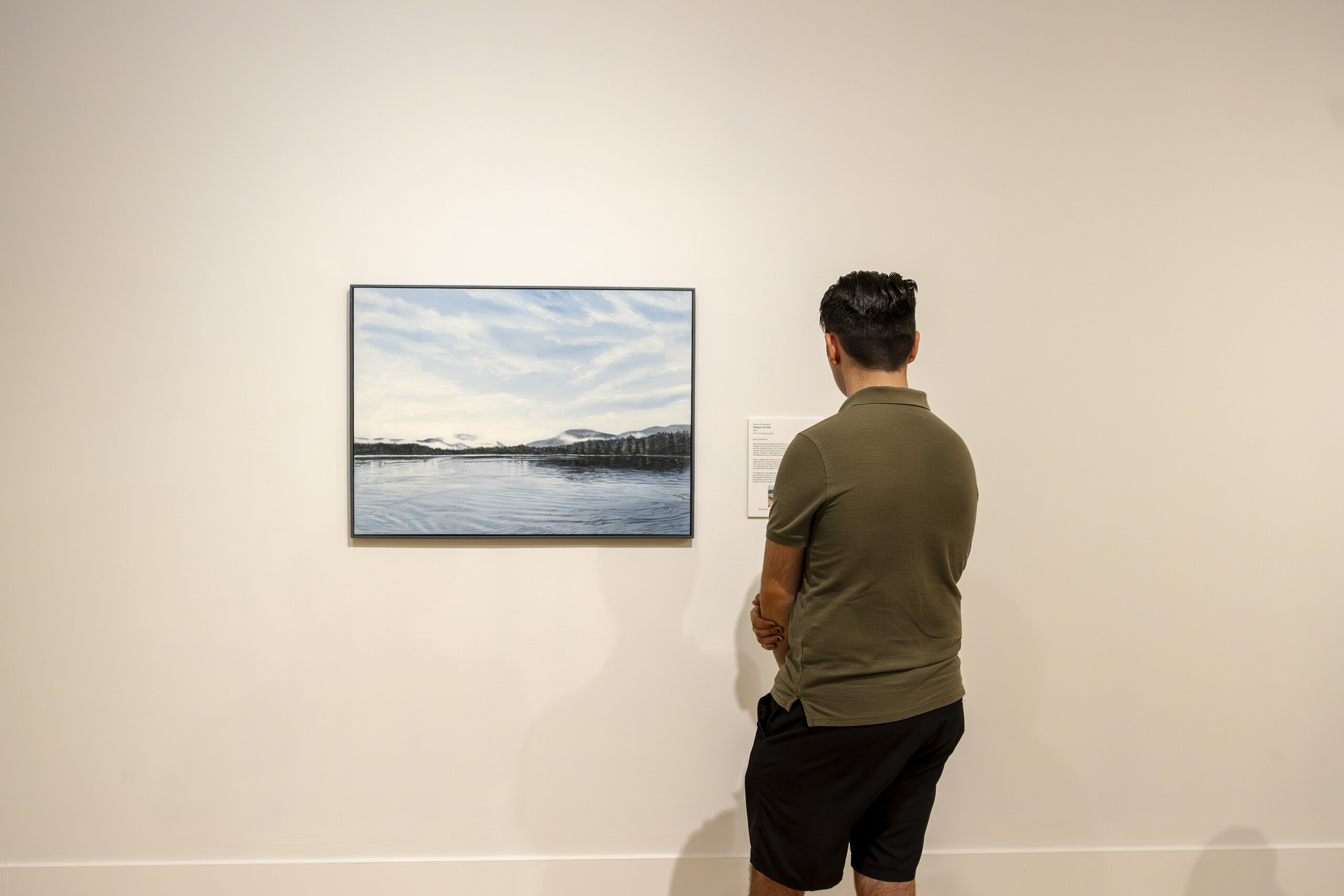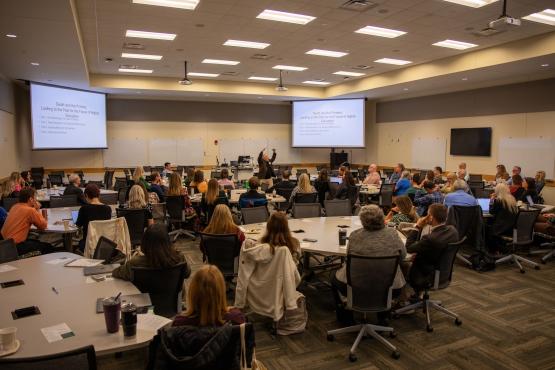Less than two miles from the center of campus, the Kennedy Museum of Art sits in the heart of The Ridges overlooking the Hocking River. Although many students might recognize the Kennedy as the eerie Victorian building peeking out of a distant forest, the building is much more than that; it is a cultural institution with deep involvement in the Chaddock + Morrow College of Fine Arts.
Sandra Harris has been the director of the Kennedy Museum of Art since 2024 and is currently overseeing her first faculty exhibition, a tradition in which the museum invites faculty members in the School of Art + Design to submit a work for display.
“The Kennedy has a history of doing faculty exhibitions, and we were looking for a way to not only have the faculty enter pieces into the show, but to have some overarching umbrella that could tie it together in some way,” Harris said. “We talked about the idea of process and how interesting that is for artists, non-artists and students alike to just get a glimpse into the way an artist thinks about and creates their work.”
This early brainstorming with Kennedy Museum of Art’s Registrar, Lisa Quinn, led to the formation of the exhibit’s title: “Art & Process,” which opened to the public on Sept. 19.
“There are many different types of media,” Harris said. “There is video, photography, painting, fiber and multimedia. You’re seeing multiple types of materials, which wasn’t planned, but luckily turned out that way. You’re going to see variety of both thought process and physical process in the work to get a very broad understanding that this faculty represents so many ways of working.”
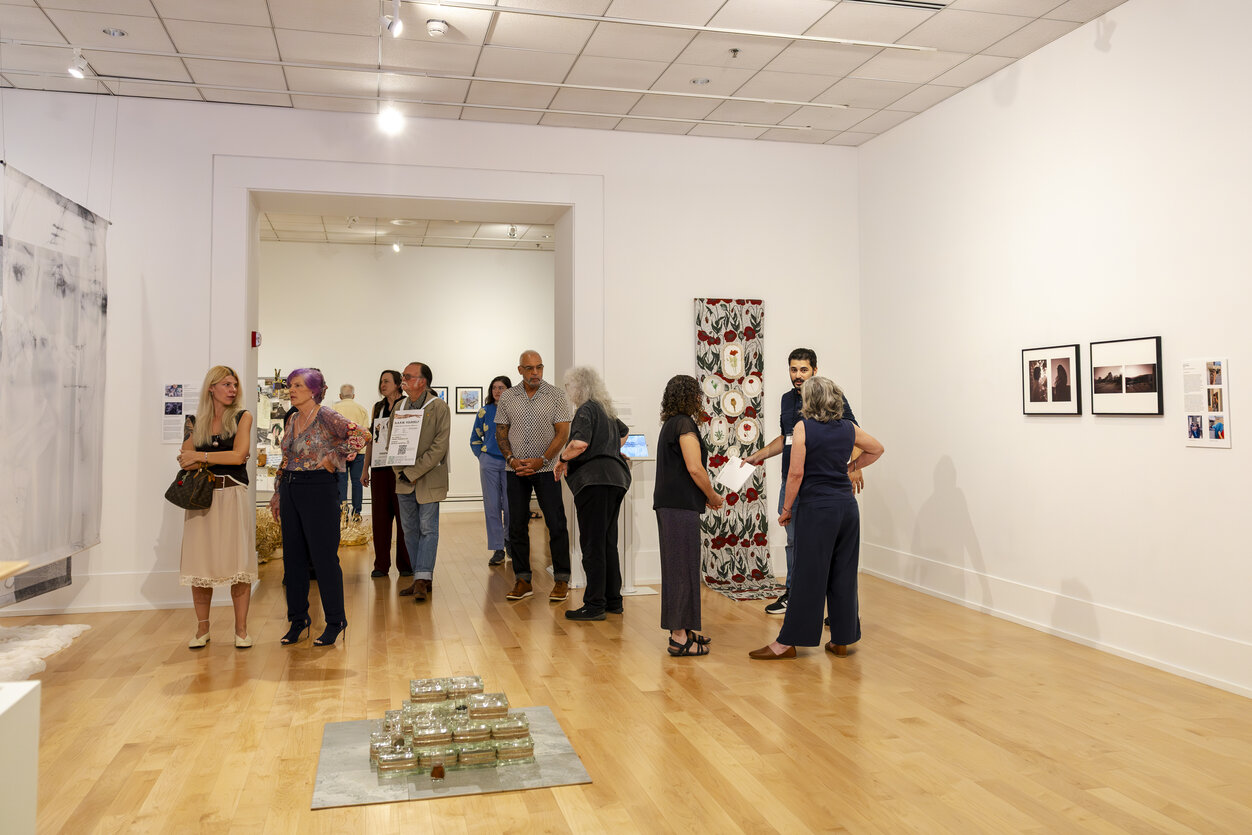
Guests at the opening reception for "Art & Process."
One of the exhibit’s multimedia pieces was created by Basil Masri Zada, an assistant professor of instruction in Digital Art + Technology. His piece fuses sound, video and physical imagery to tell the story of the ongoing dictatorship and terrorism in his home country of Syria, for which the piece is named “Destroy Again! Syria.”
“My work is using unique methods of how to explore art and AI in a new contemporary, ethical, copyrighted, authentic manner,” Masri Zada said. “Even if that concept is not for everyone due to its nature, it has the technical element of how we could explore digital technologies in an authentic, copyrighted manner as an original mode of expression.”
The process highlighted in Masri Zada’s work involved a fusion of multimedia elements with his past and personal life; the latter is a source of inspiration that was mirrored in Duane McDiarmid's piece.
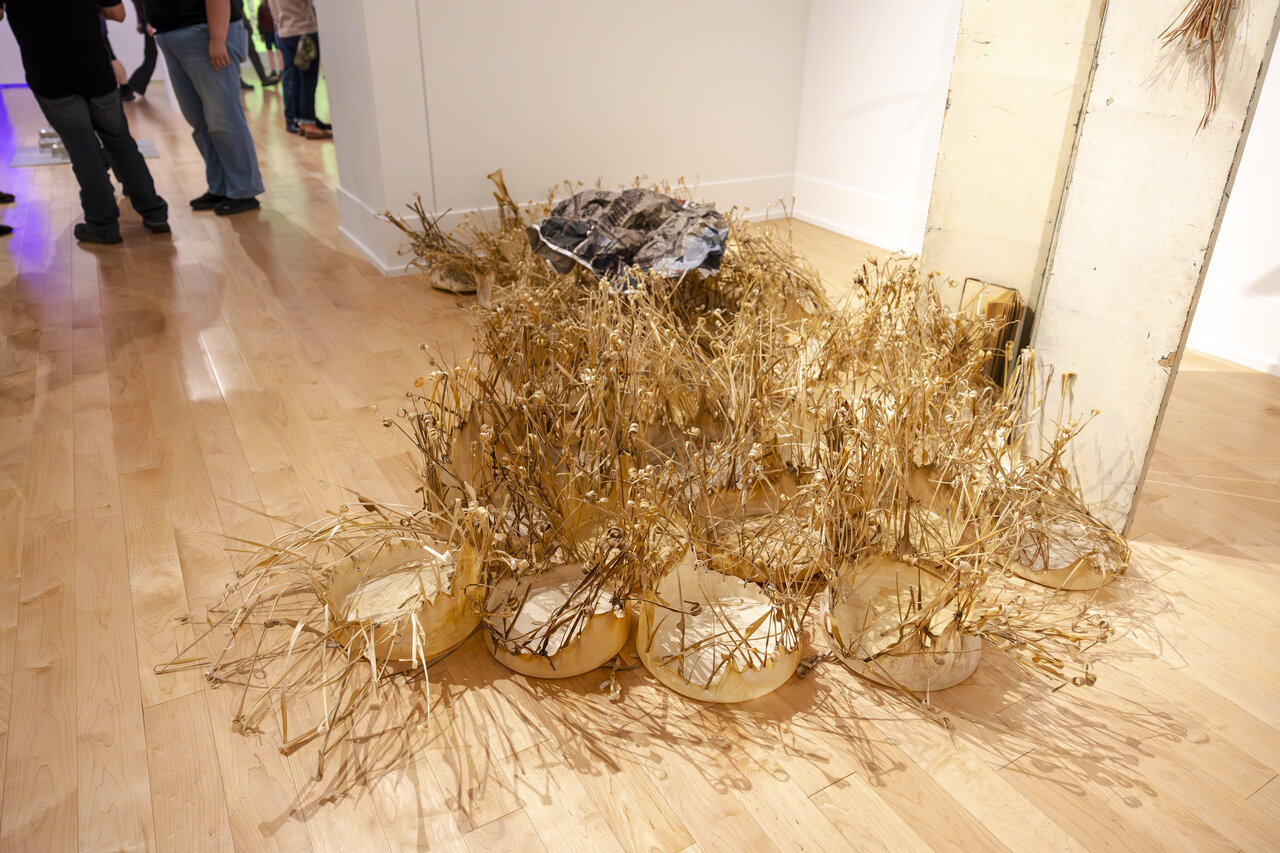
Duane McDiarmid, The Silence of Drums, 2019-2025, Rawhide drumheads, school stools, polished stones, painted paper
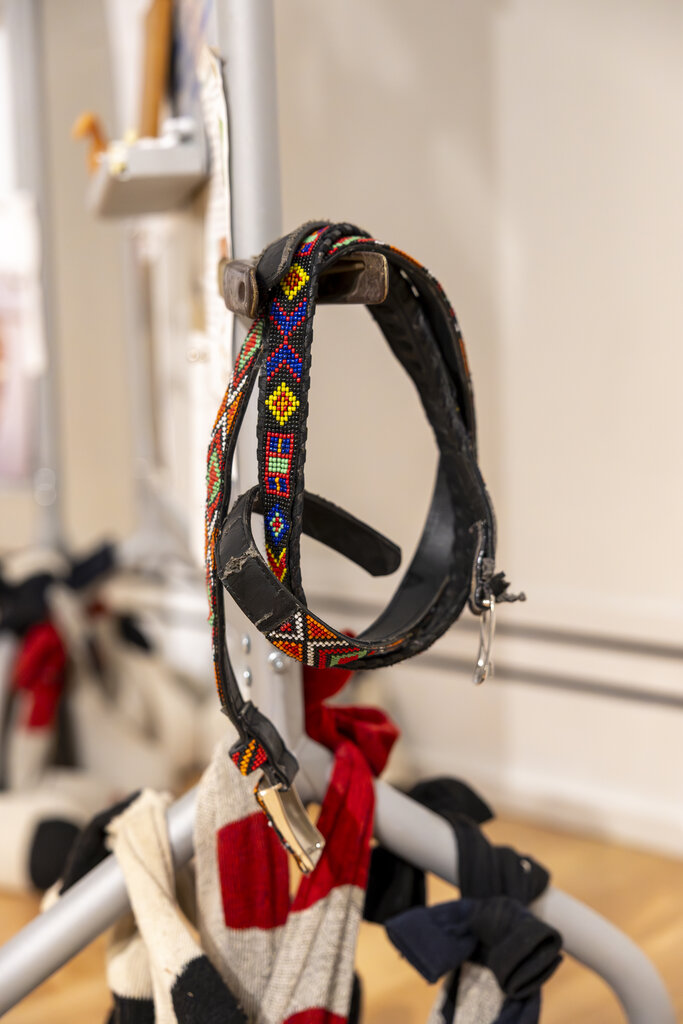
Duane McDiarmid, The Silence of Drums, 2019-2025, Rawhide drumheads, school stools, polished stones, painted paper
McDiarmid has been the director of the School of Art + Design for a little over a year and has been a part of OHIO for decades. Long before he was brought to Athens, McDiarmid spent part of his childhood in Mankato, Minnesota. At the foot of the bridge into the small town stands a marker in remembrance of 38 Native Americans who were hung in 1862.
“It always stayed with me and weighed on me that this event had occurred whereby the native people of that area, the Lakota, had ceded away most of their land under duress and pressure of pioneering America,” McDiarmid said. “We had failed to meet our obligations of those treaties…and that resulted in a series of small events, small incidents of violence.”
These small incidents eventually swelled into a weeklong war, from which American pioneers emerged victorious. A series of trials followed, and the biases and unfair nature of the courtroom proceedings led to 303 of 364 Lakota receiving death sentences. After the situation was brought to President Lincoln’s attention, that number was reduced to 38.
“But Lincoln admitted in his letters that the evidence against the 38 was not good and that he was pretty sure innocent folks were going to be hanged to sate the anger,” McDiarmid said.
This history, and the ignorance toward the event that his childhood peers still purport, weighed on McDiarmid, and served as the catalyst for his contribution to the Art & Process exhibit.
“I started thinking about a number of interactions that were very personal between me and my Native American friends that I grew up with when I was just not very aware,” McDiarmid said. “We were coming from these two culturally different perspectives on events…and I decided that would be a place to start investigating this sense that I needed to say something back to that population, just acknowledge that it happened.”
After beginning his research, McDiarmid began the process of figuring out how to visually convey his findings, all while continuing to ask questions: “Is this my story to tell? How do I tell this story so that it does not attempt to speak for or misrepresent what happened?”
“That brought me down to the idea of individuals, and that we can’t hear from the individuals that were most affected, which were the 38 that were hanged,” McDiarmid said. “That led me to start thinking about drums and the language of drums.”
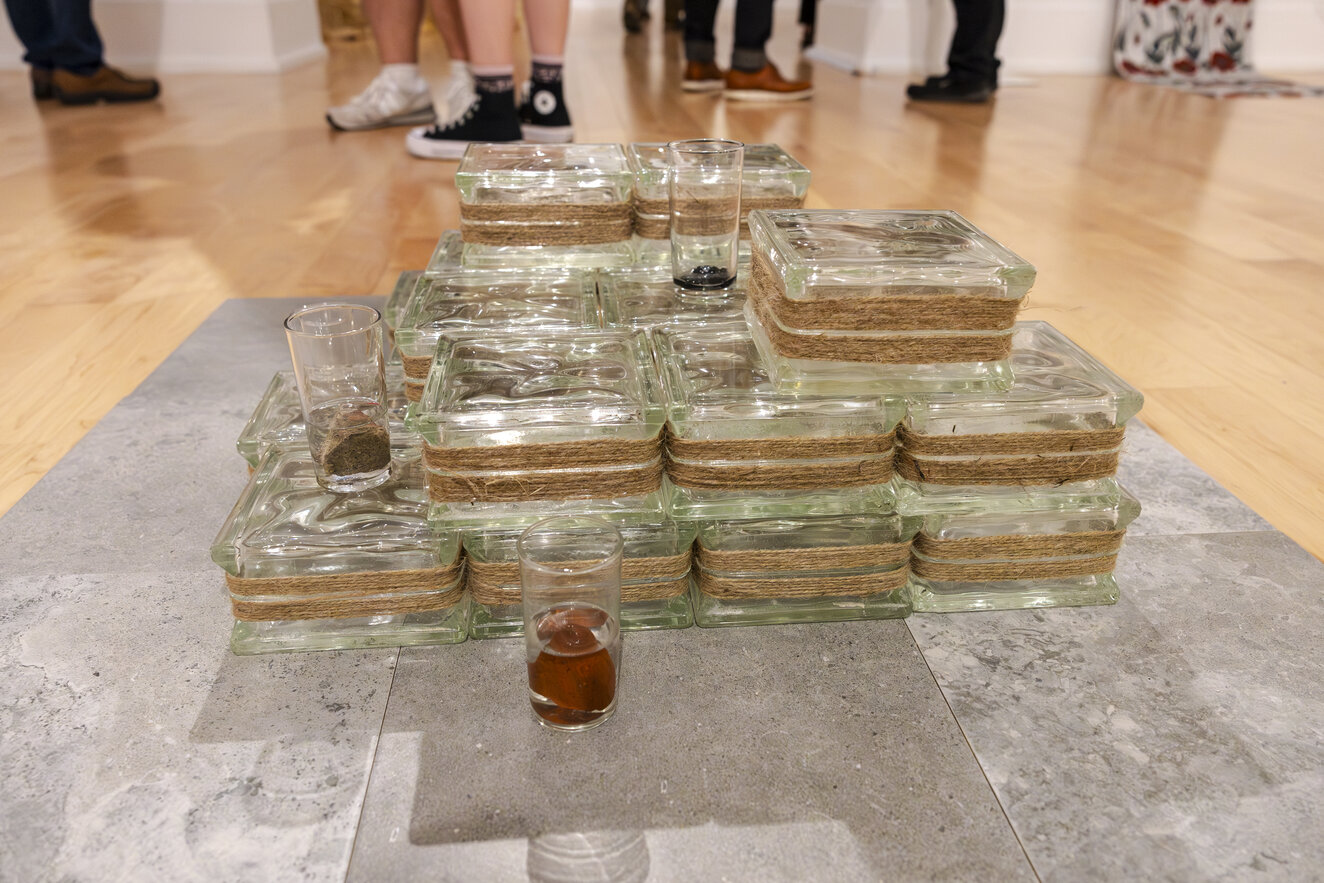
Kate Hampel, Water Table II, 2024-2025, Sculpture, found objects
After workshopping and adjusting the piece to fit in the space of the Kennedy, McDiarmid was left with 38 drums for 38 hung warriors, all absent of drumheads in a symbolic representation of the piece’s origins. The related information for the piece is displayed behind a changing screen, thus acknowledging the notion of hiding behind uncomfortable parts of history, but also the potential for a change in perspective.
McDiarmid isn’t the only faculty member who tapped into themes of symbolism to create a piece. Mateo Galvano is the recruitment and retention liaison for the School of Art + Design, as well as a lecturer in Studio Art. For this exhibition, Galvano submitted a piece that utilized the mediums of photography, abstract printing and drawing.
“Every week I go and I sit with a group of friends, and we draw a live model, so that model will be making the different poses and holding poses, and then I draw,” Galvano said. “There’s four faces that are represented in the piece and they were all created in that process where I was looking at something and drawing it.”
With these initial drawings, Galvano was working on a medium called Dura-Lar, which gives the illusion of a frosted film. Then, he layered some of those drawings together and photographed them to be printed on polysheer fabric. The aesthetic of the final results was heavily inspired by the fog in Athens.
“I really love that state, because it’s also a mood or it might also be a concept…if the image contains a foginess or if we’re looking at something through the fog, it can create an idea or physical situation of searching,” Galvano said.
As an abstract painter, the display of this piece was influenced by that idea of searching, as well as giving the viewer autonomy in how they perceive the piece.
“You can see the drawing of the face, but you can also look through it, and the way I hung it in the museum is that they are not all lined up exactly straight behind each other, but a little bit tilted and they are sort of shifting in relationship to each other and when you stand in front of them, now it’s basically a sculpture,” Galvano said.
The piece is called “Personae,” representing the thought process he went on “about the idea of the shadow and the persona, the persona being the face we put forward in the world, but then all of us have a shadow that is hidden, maybe even from ourselves.”
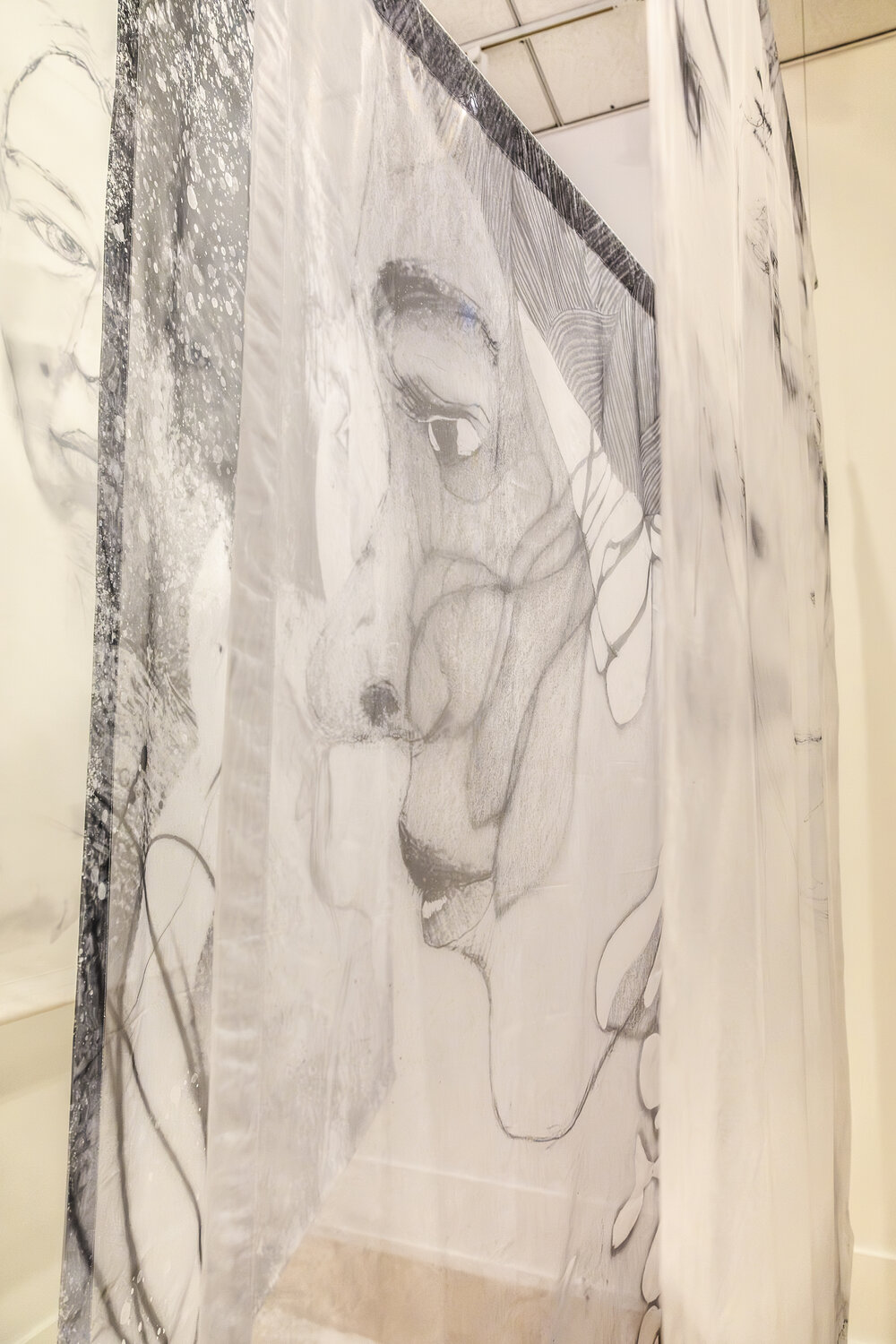
Mateo Galvano, Personae, 2025, Digital prints on polysheer fabric
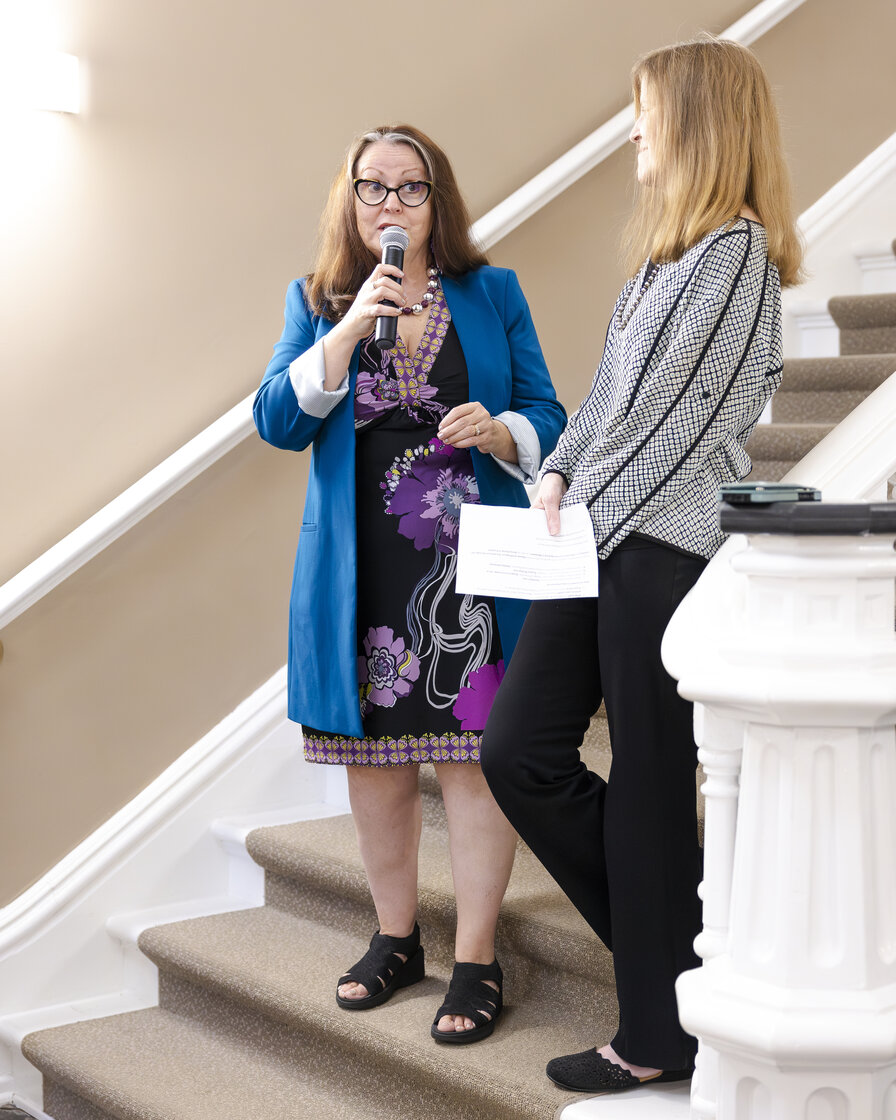
Left: Chaddock + Morrow College of Fine Arts Dean Roxanne Schroder-Arce, Right: Kennedy Museum of Art Director Sandra Harris
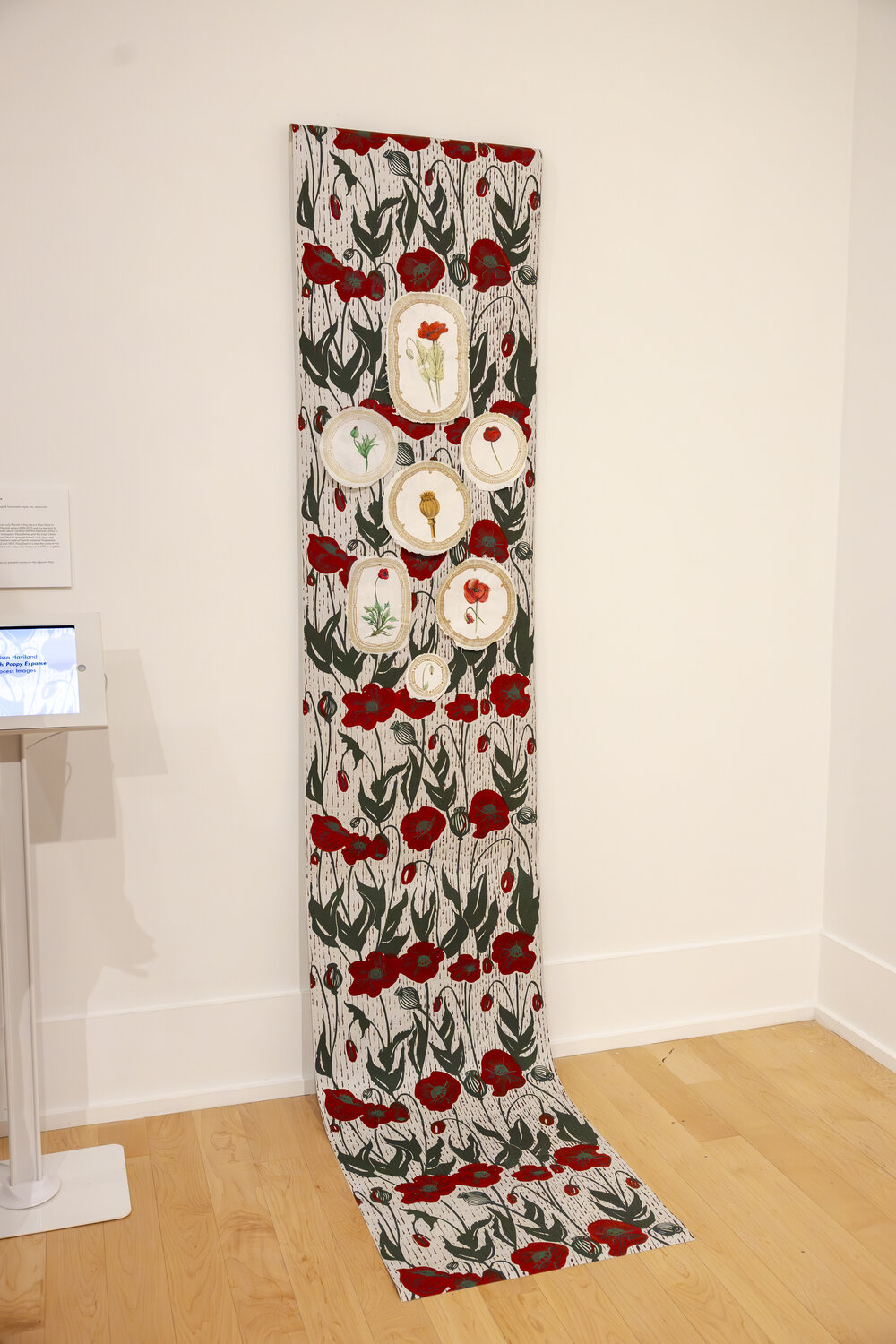
Melissa Haviland, Flourish: Poppy Expanse, 2022, Screenprint on Stonehenge + handmade paper, ink, watercolor
These three artists all share themes of symbolism and personal significance in their works, but also largely differ from each other and the 11 other faculty members they share exhibition space with, including Tom Bartel, Cassidy Brauner, Brian Dieterle, Julie Dummermuth, Mark Franz, Stuart Gair, Kate Hampel, Melissa Haviland, David LaPalombara, JP Rhea and Angela Sprunger. Each of these faculty members offers something meaningful to the exhibition and to the students in attendance.
“The importance of any faculty show is to allow students to (see the expertise of) other faculty that they have not taken classes with or worked with,” Masri Zada said. “For them to think, ‘Okay, I really like this concept or process or idea, I either want to take a class or explore this concept with that professor or that artist.’”
In addition to these benefits for students, faculty members also gain from the inclusion of a faculty exhibition at the Kennedy.
“The faculty show is a very vulnerable opportunity and a frightening opportunity in some ways, for me at least,” McDiarmid said. “I always say that there’s no tougher audience than your own students. They are going to find your weaknesses and find your hypocrisies, because that’s what we do to their work in class, and so there’s this offering of leveling that field and saying, ‘Yeah, I’m going to put my work out there for you all,’ so the faculty show is a point of exchange.”
Students and community members can engage in this exchange until the exhibit’s final day on March 29. There will also be at least one more opportunity for students and community members to hear from the artists themselves, with the next artist panel hosted on Nov. 16. This panel will allow listeners to learn more about the pieces and ask McDiarmid, Masri Zada and three other artists specific questions.
“Panels can help young artists understand how to make work and also it can open up possibilities of how a young artist can include all aspects of their life into their artwork, because we think of art as something that is separate from our life, but it’s not,” Galvano said. “It’s actually part of all of life, so artists can take parts of life and condense it into an artwork or art experience.”
School of Art + Design faculty members and staff of the Kennedy Museum of Art encourage students to engage in an invaluable aspect of their artistic education and visit the exhibition in the coming months.
“I think it esteems the faculty, I think it esteems the students,” McDiarmid said. “That’s the best part of it, students coming out of that show excited by their faculty’s work and understanding who they’re listening to.”

